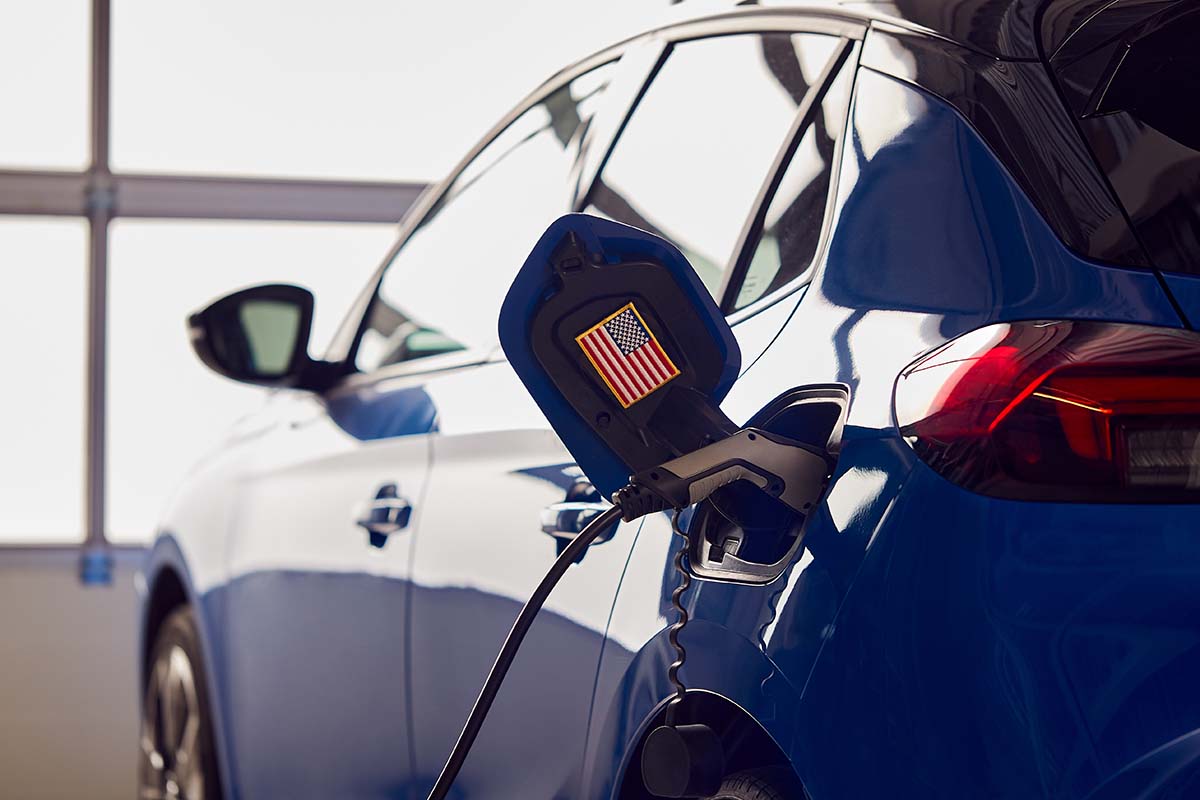
13 Nov What are the different types of fuels for cars in the US?
In the United States, the automotive landscape is diverse and constantly evolving, with various types of fuels powering the vast array of vehicles on the road. Understanding these fuel types, their characteristics, and their impact on vehicle performance is crucial for any car owner or enthusiast.
What is a Fuel Type?
A fuel type refers to the specific category of energy source used to power an engine. In the context of vehicles, this means the kind of combustible substance that is fed into an engine to generate the mechanical power necessary for motion. Different fuel types offer varying levels of energy efficiency, environmental impact, and performance characteristics.
The 2 Main Fuel Types Used in Vehicles in the U.S.
In the United States, gasoline and diesel stand out as the two mainstays in vehicle fuel types, each serving distinct roles and catering to different segments of the automotive market.
Gasoline: The Popular Choice for Passenger Vehicles
Gasoline is the lifeblood of the American road, powering the vast majority of passenger vehicles. Derived from petroleum through a refining process, gasoline’s popularity stems from several key characteristics:
- High Energy Content: Gasoline contains a significant amount of energy per unit volume, which translates into potent fuel efficiency for vehicles. This energy-rich composition enables cars to achieve considerable power and speed, making gasoline ideal for a wide range of driving needs.
- Ease of Ignition: Gasoline engines are designed to ignite the fuel-air mixture easily, allowing for smooth starting and efficient operation. This quality is particularly beneficial for high-revving engines found in most passenger cars, sports cars, and motorcycles, where quick and responsive engine performance is a priority.
- Availability: Gasoline’s widespread use is supported by an extensive and well-established distribution network. Gas stations are ubiquitous across the U.S., making it convenient for drivers to refuel.
- Variety in Grades: Gasoline comes in various octane ratings, allowing drivers to choose the grade that best fits their vehicle’s requirements. Higher octane fuels are available for performance vehicles, while regular grades suffice for most standard cars.
Diesel: The Powerhouse for Heavy-Duty Use
Diesel fuel, although less popular than gasoline in passenger vehicles, is a critical component of the U.S. transportation infrastructure, particularly for commercial and heavy-duty vehicles.
- Higher Energy Density: Diesel has a higher energy density than gasoline. This means that diesel fuel contains more energy per liter, which contributes to the higher fuel efficiency of diesel engines. This efficiency is a key reason why diesel is the preferred choice for heavy-duty vehicles like trucks, buses, and some large SUVs.
- Engine Longevity and Durability: Diesel engines are known for their robustness and durability. They are designed to withstand higher pressures, which makes them ideal for long-distance and heavy-load transportation. The longevity of diesel engines often translates into longer intervals between maintenance and repairs.
- Fuel Efficiency: Diesel engines are inherently more efficient than gasoline engines. They operate using a compression-ignition system, which typically allows for a better fuel economy. This makes diesel an economical choice for long-haul trucking and commercial transportation.
- Emissions Profile: Traditionally, diesel engines have been associated with higher levels of pollutants such as nitrogen oxides (NOx) and particulate matter. However, recent advancements in diesel technology and stricter emission standards have led to cleaner and more environmentally friendly diesel engines. Modern diesel vehicles often come equipped with advanced emission control systems, such as selective catalytic reduction (SCR) and diesel particulate filters (DPF).
What is Octane?
Octane is a measure of a fuel’s ability to resist ‘knocking’ or ‘pinging’ during combustion, caused by the air-fuel mixture in an engine detonating prematurely. Higher octane fuels can withstand greater compression before igniting, which is essential in high-performance engines that operate under higher pressures.
The 3 Octane Levels for Gasoline Explained
Gasoline is classified into three primary octane levels, each designed to meet the specific needs of different types of vehicles. Understanding these octane ratings is crucial for vehicle owners to ensure optimal performance and longevity of their engines.
Regular (87 Octane)
Regular gasoline, with an octane rating of 87, is the most common and widely used fuel type across the U.S. This grade is designed for the majority of vehicles on the road, especially those with standard engines not requiring high-octane fuel. Key aspects of regular octane gasoline include:
- Cost-Effectiveness: Regular gasoline is typically the least expensive option at the pump, making it a budget-friendly choice for everyday driving.
- Compatibility: Engineered to meet the requirements of most standard vehicles, regular gasoline is suitable for a wide range of makes and models, ensuring efficient combustion and adequate performance.
- Availability: It’s the most readily available fuel at nearly all gas stations, ensuring convenience for drivers.
Mid-Grade (89–90 Octane)
Mid-grade gasoline, typically rated between 89 and 90 octane, serves as a middle ground between regular and premium gasoline. This fuel type is formulated for vehicles that can benefit from a slightly higher octane level to prevent engine knocking and improve performance. Its features include:
- Enhanced Performance: Mid-grade gasoline can offer a modest boost in performance and efficiency for some engines, particularly those that may experience mild knocking with regular octane fuel.
- Cost vs. Performance Balance: While more expensive than regular gasoline, mid-grade fuel is often less costly than premium, making it a suitable choice for drivers looking to enhance their vehicle’s performance without the higher cost of premium fuel.
- Specific Vehicle Recommendation: Certain manufacturers recommend mid-grade gasoline for some of their models, particularly those with engines that have slightly higher compression ratios but do not require full premium grade fuel.
Premium (91–94 Octane)
Premium gasoline, with octane ratings typically ranging from 91 to 94, is formulated for high-performance and luxury vehicles. This fuel type is essential for engines designed to operate at higher compression ratios, which are common in sports cars and luxury models. Characteristics of premium gasoline include:
- High Compression Engine Suitability: Premium gasoline resists knocking in high-compression engines, a common feature in high-performance and luxury vehicles, ensuring smooth operation and optimal power output.
- Improved Engine Health: Using premium gasoline in engines designed for high-octane fuel can prolong engine life and maintain performance, as it prevents the damaging effects of knocking.
- Higher Cost: Premium gasoline is the most expensive of the three grades, reflecting its specialized formulation for high-end vehicles.
Should I Put Additives in My Fuel?
Fuel additives are chemicals added to gasoline or diesel to improve various aspects of fuel performance, like cleaning engine components or increasing octane level. While some modern fuels come pre-mixed with certain additives, aftermarket additives are available but should be used with caution. Always consult your vehicle’s manual before using any additive to ensure compatibility and necessity.
Does My Fuel Type Affect Gas Mileage?
Yes, fuel type can significantly affect gas mileage. Generally, diesel engines are more fuel-efficient than gasoline engines, thanks to their higher energy content and the engine’s more efficient use of fuel. However, the specific fuel economy of a vehicle depends on various factors, including the engine’s design, vehicle weight, and driving habits.
Final Thoughts on the Main Fuel Types for Cars in the U.S.
In conclusion, gasoline and diesel remain the predominant fuel types for vehicles in the United States. Each has its advantages and disadvantages, with gasoline being more commonly used in passenger vehicles due to its availability and the nature of gasoline engines. Diesel, on the other hand, offers better fuel efficiency and is preferred in heavy-duty vehicles. Understanding octane levels is crucial for gasoline users to optimize their vehicle’s performance and longevity. While additives can offer some benefits, they should be used judiciously. Fuel type choice is a significant factor affecting a vehicle’s gas mileage and overall performance.
The choice between gasoline and diesel ultimately comes down to the specific needs and preferences of the vehicle owner, taking into consideration factors such as the type of vehicle, driving habits, and personal priorities regarding fuel efficiency and environmental impact. As technology evolves and alternative fuels like electricity and hydrogen become more prevalent, the landscape of vehicle fuels in the U.S. is likely to see significant changes. For now, however, gasoline and diesel remain the mainstays of American roads.
